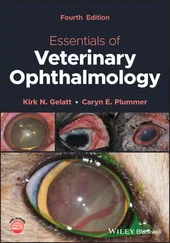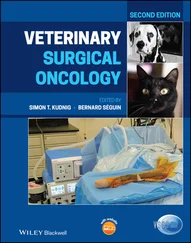1 ...7 8 9 11 12 13 ...21 Seizures – due to local brain disease, for example, neoplasia, infection/inflammation or systemic disease, for example, electrolyte disturbances or intoxication? ( Chapter 8)
How to differentiate primary from secondary system involvement?
There are often clues from the history and/or clinical examination that help you define and refine the body system involved. Or you may not be able to answer this question until further diagnostic tests are performed. But just asking the question ensures that you remember that body systems can malfunction due to direct pathology of that system, for example, inflammation, neoplasia, degeneration, infection or due to functional problems where factors not directly related to the body system can impact on its function.
 Define the location
Define the location
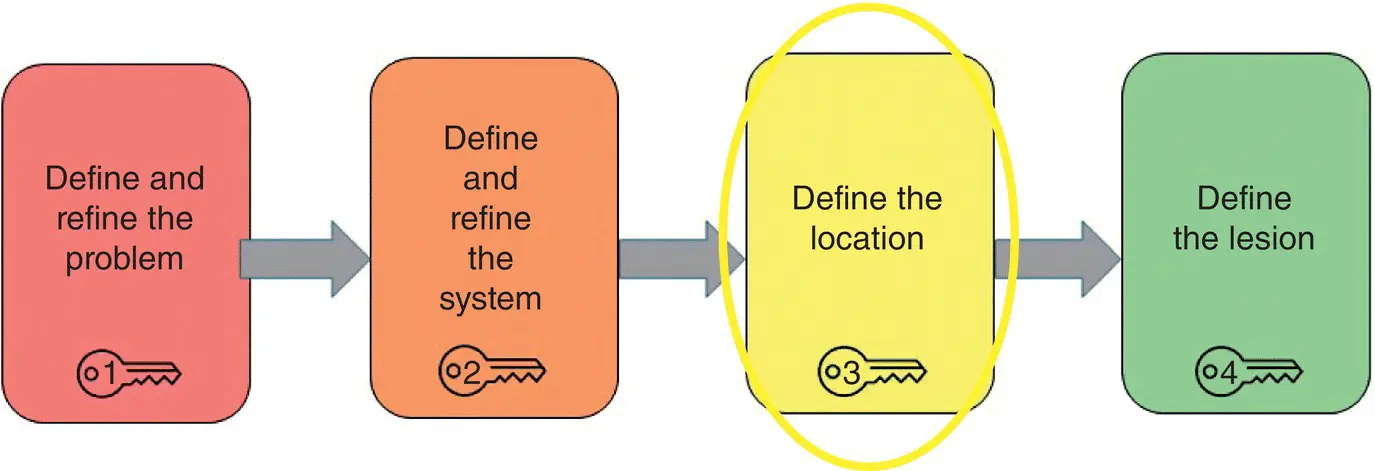
Figure 2.5Clinical reasoning step‐by‐step: define the location.
Define the location is the step which may or may not be needed during your problem‐based assessment. For some problems it is very important. For others, the Define the location question is addressed as part of the Define the system assessment. This will become evident in some of the case examples provided later in the book.
Example: having determined that vomiting is due to primary GI disease, where in the GI tract is the lesion located ( define the location )?
In this example, by asking this question, you will select the most appropriate method either to answer the question or to move on to the next step.
For example, if you believe that your history and physical examination and other ancillary data indicate a lower small intestinal lesion, endoscopy may not be an appropriate method of visualising the area or obtaining biopsies as the scope will not reach the ileum. However, if all of the information you have suggests a gastric or duodenal lesion, endoscopy may be appropriate if available.
Other examples include the following:
Vomiting due to secondary GI disease – liver, kidney, adrenals and pancreas? ( Chapter 3).Brutus is an example of secondary GI disease due to liver pathology.
Hind limb weakness is due to neurological dysfunction – is the lesion in the spinal cord (and where), peripheral nerves, muscles or brain? ( Chapter 7)
Haematuria – from urethra, prostate, bladder or kidneys? ( Chapter 12).Errol is an example of haematuria due to bladder pathology.
 Define the lesion
Define the lesion
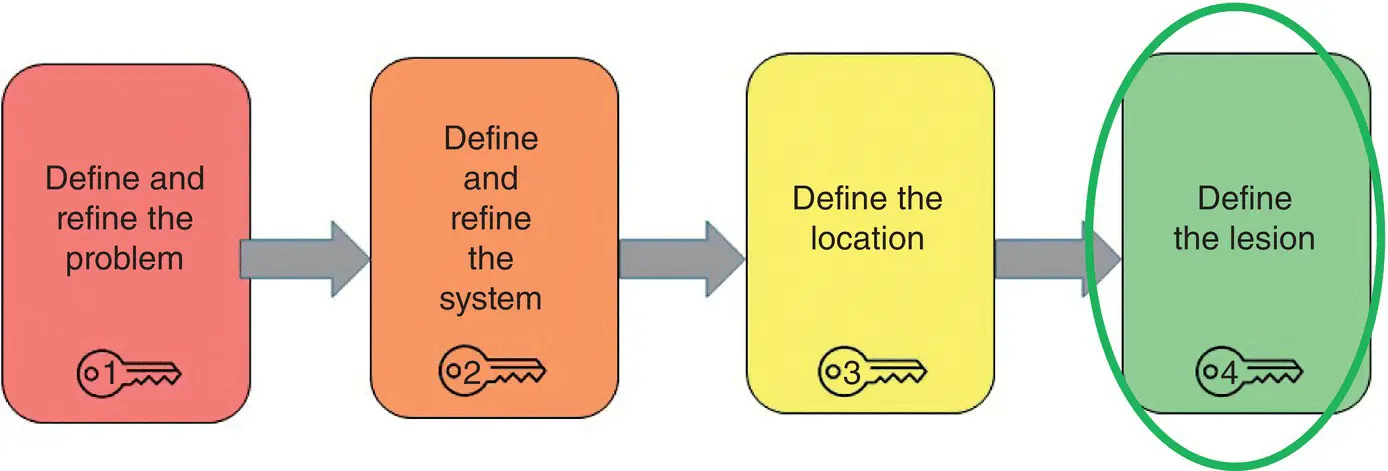
Figure 2.6Clinical reasoning step‐by‐step: define the lesion.
Once the location of a problem within a body system is determined, usually the next key question is, What is it? You need to identify the pathology – define the lesion . This is now your differential list. It can be helpful to remember the types of pathology that can occur in broad terms – for example, degeneration, anomaly, metabolic, neoplasia, nutritional, infection, inflammation, idiopathic (‘genetic’), trauma, toxic and vascular (DAMNIT‐V).
Which type of pathology is most likely going to depend on the body system or organ involved, the signalment of the patient (species, breed, age, sex etc.), the clinical onset and course of the clinical signs, the geographic location of the patient and what disorders are common in that population.
This assessment can be influenced by whether the patient is in a general clinic or a referral hospital. Common things occur commonly or ‘the hoof beats in the night are much more likely to be due to a horse than a zebra’ (unless you are on safari, of course!). This doesn’t mean that uncommon diagnoses should not be considered (and they will of course be more common in specialist hospitals). It’s just that common disorders usually receive diagnostic priority at the beginning of a clinical investigation in general practice.
Example: the patient has a gastric lesion – is it a tumour, foreign body or ulcer?
This question will require visualisation and/or biopsy to answer, but it would have been a waste of time asking the question until you had arrived at the right location.
Other examples include the following:
Spinal cord pathology identified based on a neurological examination – is it inflammation, infection or a neoplasm?
Haematuria is due to lower urinary tract disease – infection, calculi or neoplasia?
Large bowel diarrhoea – parasites, infection, ulceration, stricture, neoplasia or diet related?
Putting it all together
What do I need to do to define the problem, system, location or lesion?
The diagnostic methods used to define the problem, the system, where appropriate the anatomical location and the lesion will vary depending on the problem.For example, clinical pathology may be needed in some cases to define the problem (e.g. is red urine due to blood or haemoglobin?), but in many cases, the problem will be definable on the basis of history (onset and course of the disease) and clinical examination findings.
Similarly, diagnostic tests or procedures may be required to define and refine the body system involved in some cases, and for other problems, the system involved will be evident from clues from the history and/or the clinical examination.
In some cases, once the problem is defined, for example, regurgitation, the body system is immediately apparent and the anatomical location identified (upper GI tract – oesophagus or pharynx).
For neurological problems, clinical and neurological examination will often define the problem, system and location, leaving only the lesion needing to be defined by diagnostic testing.
Are the steps always in the same order?
The order in which the problem, system, location and lesion are defined may change for some problems.
For example, when assessing coughing and diarrhoea, identifying the location occurs before identifying the system, as location identification helps identify the system (discussed in more detail in Chapters 4and 9).
For some problems, for example, pruritus ( Chapter 15), you might go straight from problem definition to seeking to define the lesion.
However, for almost all clinical problems, answering some or all of the four questions – What is the problem? What system is involved and how? What is the location of the lesion? and What is the lesion? – will provide a framework to guide your clinical reasoning and diagnostic and therapeutic decisions.
Thus, instead of thinking when faced with a vomiting patient, ‘I wonder if it has a gastric foreign body or renal failure or a liver tumour?’, your initial energies are directed at defining the problem and system, which will help make your list of differentials (which are usually the location and/or lesion) logical, appropriate and given appropriate priority. In this way, the diagnosis is made thoughtfully, and during the process, all diagnostic options can be considered as the need arises.
But does pattern recognition have a place?
Читать дальше
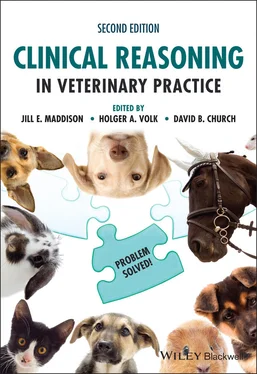
 Define the location
Define the location
 Define the lesion
Define the lesion
